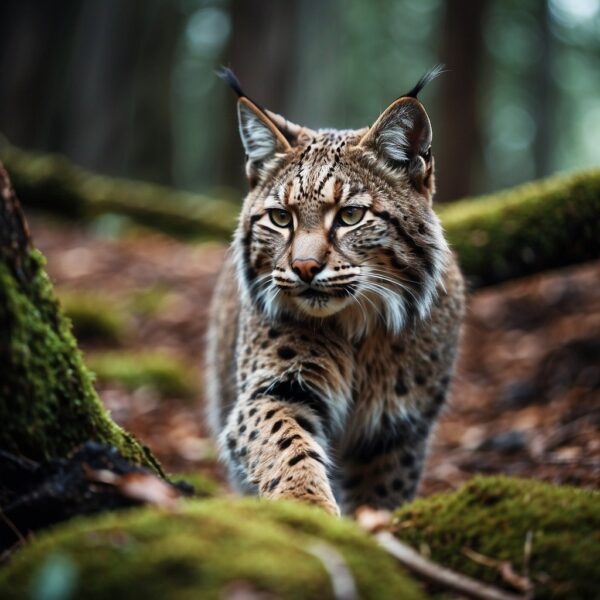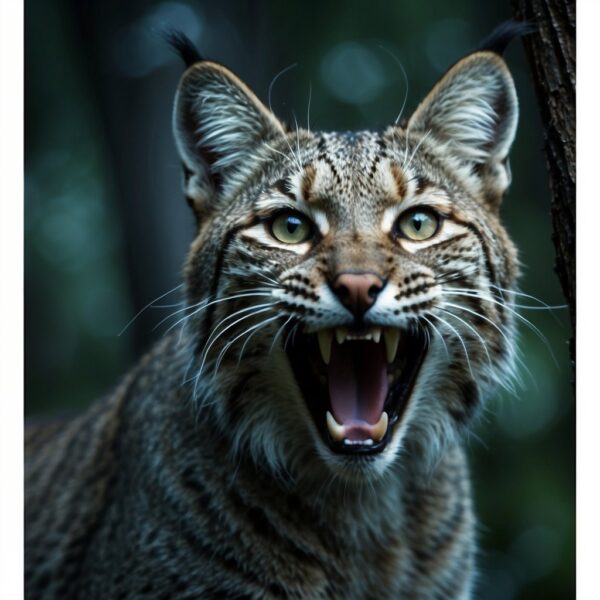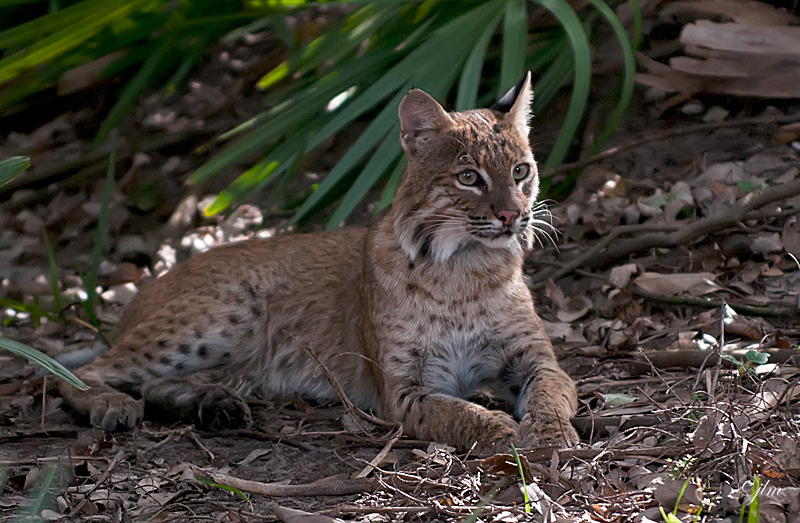
Bobcat Scream: Frightening Nocturnal Calls
The bobcat scream is often mistaken for something much more sinister, striking a chord of primal fear in those who hear it in the wilderness. As a nocturnal predator, the bobcat relies on various forms of communication, one of which is a scream that can sound disturbingly human. This scream serves multiple purposes, including mating calls and territorial disputes. While to the untrained ear, it may resemble cries associated with mythical creatures like banshees, in truth, it is a natural vocalization for this feline.
Understanding the sound of a bobcat scream within the context of its behavior and environment is essential. These animals have adapted to a variety of habitats across North America and their vocalizations play a crucial role in their survival and reproduction. Researchers analyzing audio recordings can distinguish between different calls, shedding light on the complexities of bobcat communication. For observers in the wilderness, recognizing these calls can be both a safety measure and an enlightening glimpse into the lives of these elusive predators.
Key Takeaways
- A bobcat’s scream can be mistaken for human-like sounds, causing alarm or confusion among those who hear it.
- Vocalizations are a key part of bobcat behavior, important for mating, territory, and more.
- Analysis of bobcat sounds enhances our understanding of their communication and aids in species observation.

Understanding Bobcat Vocalizations
Bobcats (Lynx rufus) utilize a range of vocalizations to communicate within their species. These sounds serve various functional roles in their daily lives, from mating to establishing territory.
Common Bobcat Sounds
Bobcats produce a variety of sounds such as meows, growls, hisses, and purrs. These sounds can convey different intentions ranging from warning signals to social interactions among bobcats. Meows are often softer and associated with kittens or non-threatening situations, while growls and hisses signify aggression or defense.
The Iconic Bobcat Scream
A bobcat scream is a loud, piercing call that can be mistaken for a human in distress. During mating season, these screams become more common as they serve as a mating call to attract partners and establish breeding territories. The scream can also be a response to pain or danger.
Functional Roles of Bobcat Calls
Vocalizations in bobcats are critical for territorial defense, mating, and indicating distress. Mating calls like the scream or squalls increase in frequency during the breeding season, while hissing or growling can indicate a bobcat defending its territory from intruders or during predator-prey interactions.
Distinctive Characteristics Of Bobcat Vocalizations
Bobcat vocalizations are known for their powerful, eerily human-like quality. The scream, in particular, is characterized by its variability in pitch and volume, standing out amongst nocturnal sounds in their environment. Such vocal clarity ensures the message is conveyed effectively, whether it’s for attracting a mate or fending off potential threats.
Behavioral Aspects and Context of bobcat Screams
Bobcat screams are a distinctive aspect of their communication, particularly evident during mating season, and serve a variety of functions from territorial marking to expressing distress. These vocalizations can be surprisingly human-like, often mistaken for a woman’s scream.
Mating and Breeding Season Behaviors
During the mating season, bobcats engage in loud vocalizations, including a high-pitched scream that is a part of their mating behavior. These screams are primarily used to attract potential mates and can be heard over long distances. The breeding season, typically ranging from winter to early spring, is the peak time for such activities.
Territorial Marking Through Sound
Bobcats use a variety of sounds to establish and mark their territory. These can include growls, hisses, and screams. Through these audible signals, they communicate their presence and dominance in a given area to other bobcats and potential predators, reducing the likelihood of physical confrontations.
Parental Calls and Kitten Interactions
Bobcat mothers communicate with their kittens using a series of vocalizations, from meows to purrs, which change as the kittens mature. The intensity of a scream may indicate moments of heightened concern or urgency, alerting their young to potential danger or calling them back to safety.
Bobcat Scream: Responses to Threats and Distress
When facing threats or in a state of distress, bobcats may emit loud screams. This form of communication can serve to intimidate smaller predators or act as a distress call. In confrontations, bobcats may use a combination of screams, growls, barks, spit and hisses to ward off intruders or larger predators.

The Ecology of the Bobcat
The Bobcat (Lynx rufus) is a North American wildcat known for its elusive behavior and versatility in various habitats. Understanding its ecology is crucial for conservation efforts and appreciating its role in the ecosystem.
Bobcat Habitat and Range
Bobcats are highly adaptable animals found across various environments in North America. They establish territories that encompass forests, swamps, desert edges, and even suburban areas. The core of their habitat choice is the availability of prey and the presence of shelter for rearing young.
- Forest: Provide cover and ample prey.
- Swamps: Offer water resources and diverse prey.
- Deserts: Support bobcats with their adaptability to sparse prey.
- Suburbs: Human environments with unexpected food sources.
Prey and Hunting Techniques
Primarily nocturnal, bobcats hunt using stealth and ambush tactics rather than long chases. Their diet consists mainly of small to medium-sized animals such as rabbits, rodents, birds, and occasionally deer. They have excellent hearing and sight which aid in their hunting, allowing them to make high-pitched sounds known as bobcat hunting sounds to communicate or signal during the hunt.
- Preferred Prey: rodents, rabbits, small birds.
- Hunting Method: Ambush, stealth.
- Sensory Advantages: Sharp hearing, excellent night vision.
Conservation and Population Challenges
Conservation status of bobcats varies regionally; however, they are not currently listed as endangered. They face several threats including habitat loss, hunting, and vehicle collisions. Efforts are in place to monitor bobcat populations and manage their territories to ensure long-term wilderness survival.
- Present Threats: Habitat fragmentation, illegal poaching.
- Conservation Measures: Protected lands, legal hunting restrictions.
- Population Monitoring: Research programs and wildlife tracking initiatives.
Human and Bobcat Interactions
Interactions between humans and bobcats are often marked by a mix of curiosity and caution. The elusive nature of bobcats and their occasional ventures into urban areas create situations where understanding their behavior is crucial for coexistence.
Urban Encounters and Safety Measures
In urban settings, encounters with bobcats have become more frequent as housing developments encroach upon their natural habitat. Safety measures are integral to reducing conflicts between bobcats and humans. It is important to secure food sources such as garbage and pet food to discourage bobcats from approaching homes. In light of their diet, which includes animals like squirrels, rabbits, and fawns, assistance from local wildlife services is recommended if a bobcat becomes a nuisance. It is vital to keep pets, particularly smaller ones like domestic cats and dogs, indoors or in secure areas, as they can be seen as prey by bobcats.
- Do:
- Secure trash bins and pet food.
- Monitor pets when they are outdoors.
- Don’t:
- Approach or feed bobcats.
- Allow pets to roam freely if bobcats are sighted.
Comparing Domestic Cat and Bobcat Behavior
Bobcats, although sharing a lineage with domestic cats, exhibit distinct differences in behavior. Bobcats are solitary creatures, generally avoiding humans and only communicating with others of their kind during mating season or establishing territory. Unlike domestic cats, which may display affection and contentment through vocalizations and purring, bobcats’ communication is more focused on survival, with screams often being mistaken for a woman screaming due to its high-pitched and alarming sound.
- Bobcat Behavior:
- Solitary and elusive.
- Limited interaction with humans.
- Domestic Cat Behavior:
- Social with family groups.
- More likely to interact with humans.
Myths and Realities of Bobcat Screams
The chilling scream of a bobcat is often shrouded in myths, with some likening the sound to a woman’s scream, fueling superstitious tales of banshees. In reality, the bobcat scream is a form of communication used during the mating season or when warding off other predators. This vocalization can be quite disconcerting to those unacquainted with it, and understanding this aspect of bobcat behavior can help dispel fear and misconception.
- Myth: Bobcat screams are supernatural occurrences.
- Reality: Bobcat screams are natural vocalizations for communication and mating.

Analyzing Bobcat Audio Recordings
Techniques for Identifying Bobcat Sounds
To accurately identify bobcat sounds, researchers use high-quality audio recordings to categorize vocalizations. They rely on field recordings, where bobcats are present, to capture authentic sounds, distinguishing them from other wildlife by their unique pitch and pattern. Specialized audio software helps in analyzing the frequencies, which is key to differentiating between sounds of contentment and distress.
The Influence of Bobcat Sounds on Media
Bobcat sounds often evoke wildness and can be used to enhance media content, such as music or video productions. Their distinct cries, comparable to a banshee-like scream, create an atmospheric effect in audiovisual media. Music bands have been known to incorporate these wild, eerie sounds into their records for a dramatic impact, while wildlife documentaries utilize their real-world sounds for authenticity.
Using Sound for Bobcat Research and Management
The use of audio recordings in bobcat research has practical applications in wildlife management. Acoustic monitoring techniques enable researchers to estimate bobcat populations, identify habitat preferences, and monitor the health of these elusive creatures. Consistent audio analysis helps in the non-invasive tracking of bobcats, informing conservationists about species behaviors and requirements in changing environments.
Comparative Analysis
In this section, we discuss the distinct vocalizations of bobcats, how their calls compare with those of other predators, and their role in animal communication.
Bobcat Vocalizations Versus Other Predators
Bobcats (Lynx rufus) exhibit a range of vocal sounds, often described as screams which can resemble the wails of a banshee. Unlike the predictable bark or growl associated with predators like foxes, bobcat noises can be more varied and intense. The primary vocalizations include hisses, growls, meows, and the most eerie, high-pitched screams, especially during the mating season. These screams can serve multiple purposes from a mating call to a signal of distress.
While foxes tend to utilize a series of barks and howls for communication over longer distances, bobcats use their piercing screams more sparingly due to the risk of attracting larger, potentially dangerous predators. The risks of such vocalizations underscore the bobcat’s reliance on stealth and surprise rather than vocal intimidation in avoiding physical confrontation.
Bobcat Calls in the Context of Animal Communication
Animal communication serves vital roles in the wild, from indicating the presence of danger to facilitating mating. Bobcats employ a nuanced variety of vocalizations intricately linked with their behavior. These vociferations are often nocturnal, coinciding with the bobcats’ peak activity hours.
Bobcats utilize their keen vision and sense of smell during hunting, but vocalizations are a critical aspect of their communication repertoire, especially when visual cues are insufficient. While some animal sounds serve to establish territory or create group cohesion, bobcats’ vocalizations are more typically solitary, used for mating calls or signaling immediate behavioral responses.
Their varied calls also contrast with the more uniform sounds of many birds or the simple communication systems of less complex animals. The complexity of bobcat communications accentuates their adaptability as solitary predators which may communicate to connect with mates, defend territory without a confrontation, or express aggression only when necessary.

Bobcat Scream: Adaptations and Evolutionary Perspective
The bobcat’s vocal adaptations represent a well-honed evolutionary trait linked to its survival strategies, which include hunting, mating, and territory definition.
Evolution of Bobcat Vocal Mechanisms
The vocal apparatus of the bobcat (Lynx rufus) has evolved to facilitate a range of sounds, from purrs during peaceful encounters to the infamous scream heard during the mating season. These vocalizations have adapted over time, optimizing the bobcat’s ability to communicate within its environment. Screaming, especially, plays a pivotal role in reproduction, serving as a mating call that announces readiness to nearby females or competing males.
Evolutionary Pressure on bobcats has refined their vocal mechanics to produce sounds that maximize distance coverage and convey nuanced messages despite dense forests or rugged terrains. This evolution includes the development of a larynx and specialized vocal cords capable of producing high-pitched sounds that cut through space, alerting others of the bobcat’s presence without revealing its exact location.
Behavioural Significance of Sound in Survival
Vocalizations in bobcats serve multiple behavioral functions. Communication through sound facilitates various survival behaviors:
- Territory: Vocalizations are crucial in establishing and maintaining territories. A bobcat’s scream can serve as a warning to potential intruders, signifying a claim over hunting grounds and helping avoid dangerous physical confrontations.
- Mating: During breeding seasons, screams are used as mating calls by both sexes but are primarily attributed to females signaling their receptiveness to males.
- Hunting and Predation: Though generally silent stalkers, bobcats may use subtle sounds to communicate with offspring during hunting lessons or to pounce on prey like squirrels, fawns, raccoons, and rabbits.
- Danger Signals: Harsh vocalizations like screams can indicate distress or alert to the presence of predators, rallying others in the vicinity or warning off approaching threats.
Practical Tips for Observers
When setting out to observe and record bobcat screams, it is important to equip yourself with the proper knowledge and tools to optimize the experience. This section provides practical guidelines for those interested in bobcat vocalizations.
Best Practices for Listening and Recording
For observers intent on capturing the elusive sounds of the bobcat, it is advised to:
- Visit wilderness areas during twilight hours, when bobcats are most active and vocalizations are likely to occur.
- Use high-quality audio equipment that can capture a wide range of frequencies with clarity.
- Remain quiet and still, minimizing your own noise to avoid scaring away wildlife and to ensure the purest recording of bobcat screams.
Interpreting Bobcat Screams in Nature
Understanding the context of bobcat screams helps in interpreting their potential meanings:
- Establish whether the scream is a communication between bobcats or a response to potential threats.
- Recognize that a bobcat scream can indicate territorial claims, mating calls, warnings, or expressions of distress.
Safety Precautions When Encountering Bobcats
While observing bobcats, safety must be a priority:
- Maintain a safe distance from any encountered bobcat to avoid provoking a defensive reaction.
- If a bobcat is encountered unexpectedly, do not run; instead, back away slowly and make your presence known by speaking in a firm voice.
- Understand that, though not typically dangerous to humans, bobcats can be protective of their territory and young.

Bobcat Screams Frequently Asked Questions
In exploring the mysterious and often misunderstood cry of the bobcat, many questions arise about its eerie scream which can unsettle the night and evoke images of supernatural beings like the banshee.
What does it mean when you hear a bobcat scream?
A bobcat scream typically indicates territorial disputes, mating calls, or it may be a communication method to keep individual animals within their own space. These screams can be quite alarming, resembling a person in distress.
Can a bobcat’s scream be mistaken for a bird or a woman?
Yes, a bobcat’s scream can sometimes be mistaken for a bird or a woman’s scream due to its high-pitched and unsettling quality. The intensity and pitch can mislead listeners unfamiliar with regional wildlife sounds.
Is it common to hear bobcats screaming at night?
Bobcats are crepuscular, meaning they are most active during dusk and dawn, but they can also be active at night. It is during these times that their screams are most often heard, making nocturnal screaming relatively common.
Why might a bobcat scream sound like a banshee?
A bobcat’s scream can sound like a banshee because it is a high-pitched, piercing shriek that is similar in nature to the wailings traditionally attributed to these mythical spirits in folklore.
Are there any notable differences between male and female bobcat screams?
Male and female bobcat screams may differ slightly, with the males typically having a deeper, more resonant sound, while the females may have a higher-pitched scream. However, to an untrained ear, these differences can be subtle and difficult to discern.
How can one differentiate between a bobcat’s Growl and a meow?
A bobcat’s growl is louder, more intense, and often longer in duration than a meow, which is softer, shorter, and used for different types of communication, such as signaling kittens or expressing contentment.